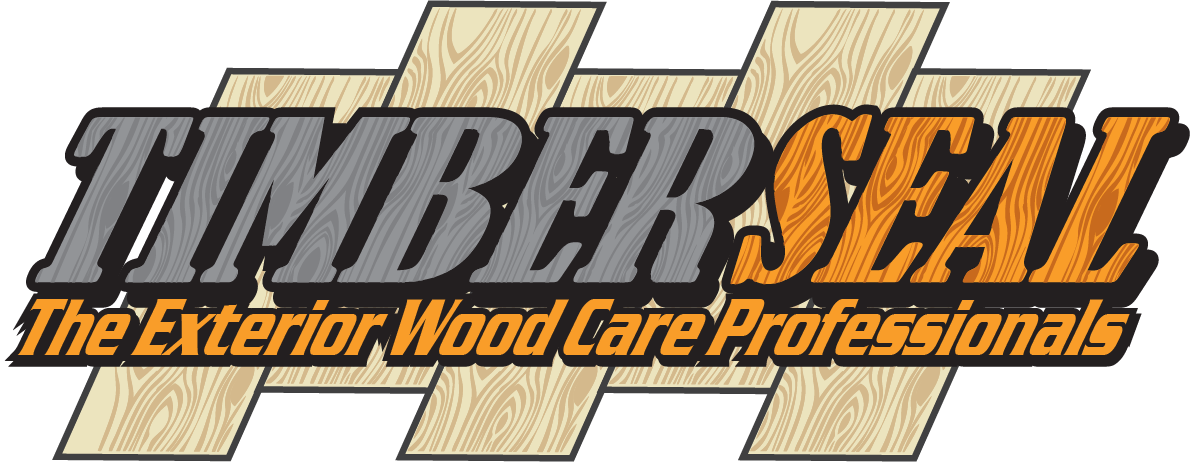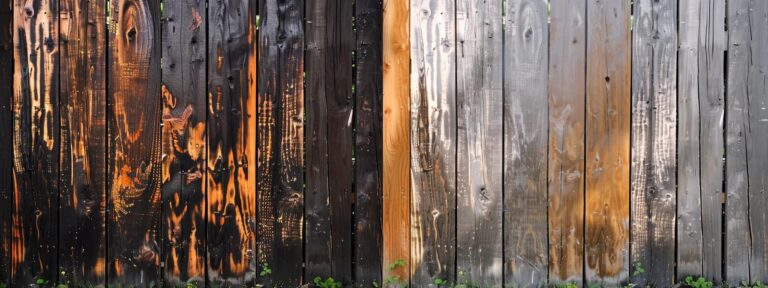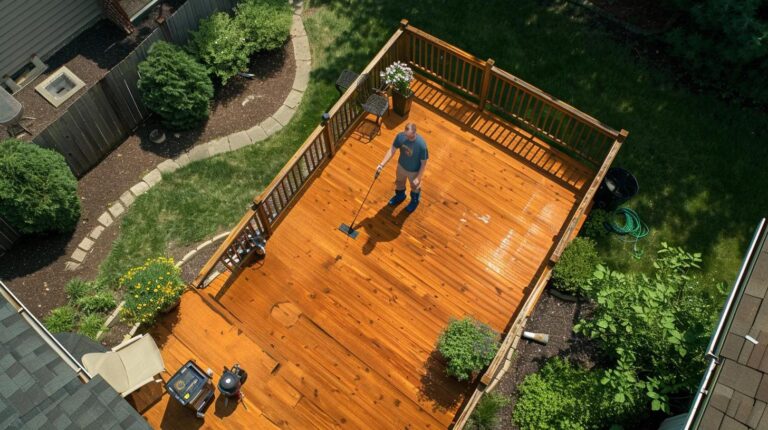Fall Clean Up Power Washing and Wood Cedar Maintenance Guide for Effective Exterior Home Care
Preparing your home exterior for winter starts with addressing accumulated dirt, mold, and UV damage before temperatures drop. This guide reveals how fall power washing and cedar maintenance protect surfaces, enhance curb appeal, and extend the lifespan of wood features. You’ll learn why autumn is ideal for exterior cleaning, the benefits of targeted power washing, best practices for cedar fence, siding, and deck care, and whether to tackle tasks yourself or enlist professional fall cleanup services. We’ll also explore eco-friendly methods, mold prevention strategies, and comprehensive house-washing routines to ensure your home weathers winter in top condition.
Why Is Fall the Best Time for Power Washing and Cedar Maintenance?
Fall’s cooler, drier weather creates optimal conditions for removing grime, preventing freeze-thaw damage, and letting sealants cure fully before winter. Addressing contaminants in autumn means less risk of ice forming in cracks and wood retaining protective coatings longer. Autumn cleaning sets the stage for healthy exterior surfaces year-round.
How Does Fall Power Washing Prevent Winter Damage?
Power washing in fall removes trapped moisture, pollen, and algae that freeze into cracks and degrade mortar or wood grain. By blasting away debris when temperatures are consistently above freezing, you eliminate moisture pockets that expand under frost. For example, spraying concrete steps at 2,000 PSI cleared mildew, preventing spalling once the first frost arrived.
This proactive removal reduces the chance of surface erosion, leading us to the aesthetic advantages of fall exterior cleaning.
What Are the Curb Appeal Benefits of Fall Exterior Cleaning?
Fall exterior cleaning refreshes siding, patios, and driveways ahead of holiday gatherings and winter storms. Clean surfaces reflect sunlight more evenly, making colors pop and landscaping stand out against autumn foliage. A vivid façade can boost perceived property value and ensures welcome parties feel polished rather than neglected.
Remodeling Impact Report: Outdoor Features
How Does Fall Maintenance Extend the Lifespan of Cedar and Other Materials?
Cedar wood treated in autumn dries thoroughly before sealant application, locking out moisture and preventing rot. Removing algae and mildew from wood grain helps stain penetrate evenly, maintaining structural integrity and resisting UV breakdown. This seasonal regimen can add up to ten years of service life for cedar decks and fences.
Why Is Mold and Mildew Removal Crucial Before Winter?
Mold and mildew harbor spores that thrive in damp winter conditions, eroding wood and posing health hazards indoors when spores migrate inside. Eliminating fungal build-up in fall reduces allergen loads, prevents wood softening, and ensures sealants adhere to a clean substrate. These actions support a healthier home environment once heating systems run.
Transitioning from why fall matters, let’s explore the specific advantages that power washing delivers for every surface.
What Are the Key Benefits of Fall Power Washing for Your Home?
Fall power washing not only prepares surfaces for harsh weather but also uncovers hidden damage, prevents staining, and deters pests. By combining high-pressure cleaning with strategic soft washing, homeowners maintain stronger, cleaner exteriors and gain insights into repair needs before snow flies.
Which Surfaces Should You Power Wash in the Fall?
Below is a comparison of common exterior surfaces and the tailored cleaning methods that maximize results without harm.
These approaches ensure each material is treated at the right intensity and prepares you for delicate cedar surfaces next.
What Are Soft Washing Techniques for Delicate Surfaces Like Cedar?
Soft washing uses low-pressure spray combined with biodegradable cleaners such as oxygen bleach or mild detergents. This method lifts dirt and kills organic growth without gouging wood fibers. For instance, applying a 1:10 solution of oxygen bleach with a soft-bristle brush removed mildew from cedar shakes while preserving grain texture and preventing raised wood fibers.
What Equipment and Safety Tips Are Essential for Fall Power Washing?
Fall power washing requires a pressure washer rated 2,000–3,000 PSI, extension wands for high eaves, protective eyewear, and slip-resistant boots. Always test pressure on a small area first, keep nozzles at least 12 inches from surfaces, and avoid electrical outlets. Securing ladders and wearing gloves further prevent injuries and ensure thorough coverage of gutters, soffits, and siding junctions.
Next, we’ll apply these cleaning principles specifically to cedar fences, siding, and decks.
How Do You Properly Clean and Maintain Cedar Fences, Siding, and Decks in Fall?
Cedar requires special care to preserve its natural oils, prevent splitting, and lock in stain or sealant. A dedicated fall maintenance routine includes gentle cleaning, prompt drying, and protective finishing to ward off winter wood damage.
What Are the Best Practices for Cedar Fence Cleaning and Mold Removal?
Begin by inspecting boards for loose nails or rot. Use a soft-wash detergent formulated for cedar, apply it with a low-pressure sprayer, and agitate with a nylon brush. Rinse thoroughly and allow 24–48 hours of drying before sealing. This regimen not only eradicates mold but highlights any warped boards needing replacement.
How Should You Seal and Stain Cedar Wood for Winter Protection?
Sealing and staining in fall locks out moisture and UV rays. Choose a semi-transparent stain with UV inhibitors and high-penetration sealers. After cleaning and drying, apply two coats with a brush or roller, ensuring even coverage along end grains. Allow each coat to cure at least 12 hours before light foot traffic to form a resilient barrier against snow and ice.
The Influence of the Initial Treatment of Oak Wood on Increasing the Durability of Exterior Transparent Coating Systems
What Are the Essential Fall Deck Maintenance Steps for Cedar Wood?
Inspect deck boards and joists for rot or insect damage. Clean with oxygen-based bleach, then sand lightly to remove raised grain. Apply water-repellent sealer and a semitransparent stain coat, focusing on fastener heads and rail posts. Finally, tighten loose screws and clear gaps for airflow under the deck boards to prevent moisture accumulation.
With cedar structures secured, evaluate whether to tackle these tasks yourself or hire a professional.
Should You Choose DIY or Professional Services for Fall Exterior Cleaning?
Deciding between DIY and professional approaches hinges on your comfort with equipment, time availability, and risk tolerance. Both paths can yield clean surfaces, but expertise, warranty, and convenience tilt the balance for many homeowners toward professional fall cleanup services.
When Is DIY Fall Power Washing and Cedar Maintenance Appropriate?
DIY methods suit homeowners with basic electrical and carpentry skills, access to quality equipment, and time for multi-day projects. If you need to power wash a driveway or seal a small cedar fence, a rented washer and off-the-shelf sealant can suffice, provided you follow safety guidelines and manufacturer instructions.
What Are the Benefits of Hiring Professional Fall Cleanup Services?
Professionals bring specialized nozzles, industry-grade detergents, and experience diagnosing hidden issues. They handle complex surfaces like two-story siding, steep roofs, and expansive decks quickly and safely. Warranty protection, insured crews, and efficient project timelines deliver peace of mind that surfaces are cleaned and treated within optimal weather windows.
How Do Cost and Time Compare Between DIY and Professional Options?
A DIY approach typically costs 30–50% less in equipment rentals and materials but demands 2–3 full weekends for average-sized homes. Professional services often bundle cleaning, staining, and minor repairs into one visit, completing in a day or two. Though labor fees increase total spend, the time savings and expert finish routinely justify the investment for busy households.
Next, we’ll examine eco-friendly cleaning solutions you can integrate into your fall cleanup routine.
What Eco-Friendly Solutions Are Available for Fall Power Washing and Cedar Care?
Environmentally conscious homeowners can choose plant-based cleaners, water-efficient nozzles, and sustainable disposal methods. These options safeguard local waterways and protect plant life around your home.
Which Green Cleaning Products Are Safe for Cedar and Other Surfaces?
Biodegradable, phosphate-free detergents based on coconut or citrus extracts effectively break down mold without harsh chemicals. For cedar, oxalic acid formulations remove tannin stains gently. When diluted according to label instructions, these green cleaners eliminate organic growth while rinsing into storm drains harmlessly.
How Can You Conserve Water During Fall Exterior Cleaning?
Using a pressure washer with adjustable flow rates and quick-disconnect nozzles can cut water use by up to 40%. Employ shut-off guns between sections, sweep off loosened debris before rinsing, and capture runoff in temporary containment mats for landscaping irrigation once solids settle.
What Are the Environmental Benefits of Choosing Eco-Friendly Fall Cleanup?
Eco-friendly cleaning prevents chemical runoff from entering soil and groundwater, supports beneficial microorganisms in mulch beds, and reduces airborne toxins near living spaces. Sustainable practices align with responsible home stewardship and local water-use regulations, reinforcing your property’s green credentials.
Now, let’s drill down on preventing mold, mildew, and algae growth through targeted strategies.
How Do You Prevent Mold, Mildew, and Algae Growth During Fall Cleanup?
Regular fall cleaning eliminates biofilm that thrives in damp conditions, and applying protective treatments disrupts regrowth. Combined with proper drainage and airflow, these steps maintain surfaces free of health-hazardous fungi.
What Are Effective Mold Removal Techniques for Cedar and Siding?
Applying a biodegradable biocide or oxygen-bleach solution at low pressure kills spores on contact. After dwell time, gently scrub with a nylon brush and rinse. Follow up with a borate-based wood preservative on cedar to inhibit future fungi without altering wood appearance.
How Does Regular Fall Cleaning Reduce Algae and Mildew Risks?
By removing organic debris and surface moisture pockets before winter rains, you deprive algae of nutrients and moisture needed to thrive. Scheduled annual cleanings undercut growth cycles, preventing stubborn stains that require stronger chemical treatments later in spring.
What Are the Health Benefits of Mold-Free Exterior Surfaces?
Eliminating exterior mold and mildew lowers spore counts entering living areas, reducing respiratory irritations and allergy triggers. Clean siding and decks also prevent wood decay that can harbor insects and structural rot, contributing to safer, healthier home environments.
Finally, we’ll cover complete house-washing routines for siding, roofs, and gutters to wrap up your fall exterior care.
What Are the Best Practices for Fall House Washing: Siding, Roof, and Gutter Cleaning?
A coordinated house-washing plan addresses every exterior component, from vinyl and wood siding to gutters and roof surfaces, ensuring comprehensive winter protection.
How Should You Power Wash Vinyl and Wood Siding in Fall?
Use a fan-spray nozzle at 1,200–1,500 PSI, starting at the bottom and working upward to prevent streaking. Treat mildew spots with a vinegar-based solution before full rinse. Always maintain a 45° angle and keep the spray wand moving to avoid gouges in wood or vinyl panels.
What Is the Proper Way to Clean Roofs and Gutters Before Winter?
Remove loose debris by hand before applying a low-pressure rinse to clear remaining granules and algae. Flush gutters with a hose from the downspout end, ensuring blockages are cleared. Installing gutter guards after cleaning reduces clogs from falling leaves through winter months.
How Does Fall House Washing Improve Winter Weather Resistance?
Clean surfaces allow protective coatings and sealants to bond effectively, preventing water infiltration and ice dam formation. Debris-free gutters direct melting snow away from foundations, while washed roofs reduce moss-driven shingle damage. Proper fall washing thus fortifies the entire exterior against cold-season stresses.
Your home’s exterior resilience depends on timely fall cleaning and maintenance. Whether you choose the DIY route or seek professional fall cleanup services, these practices ensure every surface—from cedar fences to asphalt driveways—emerges from winter unscathed and ready for spring renewal.


